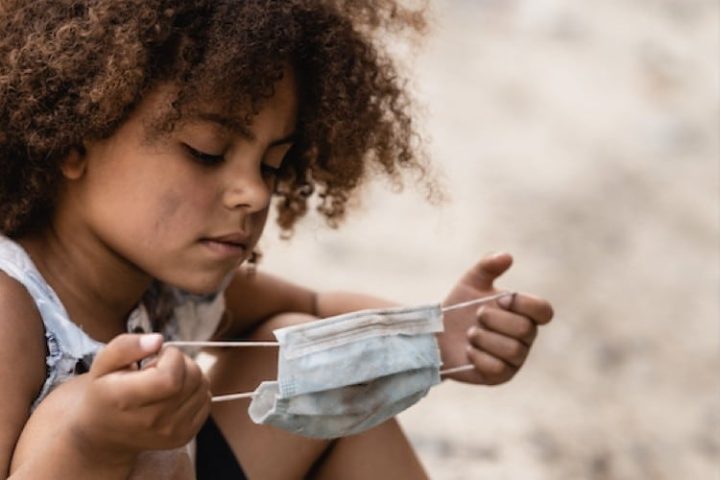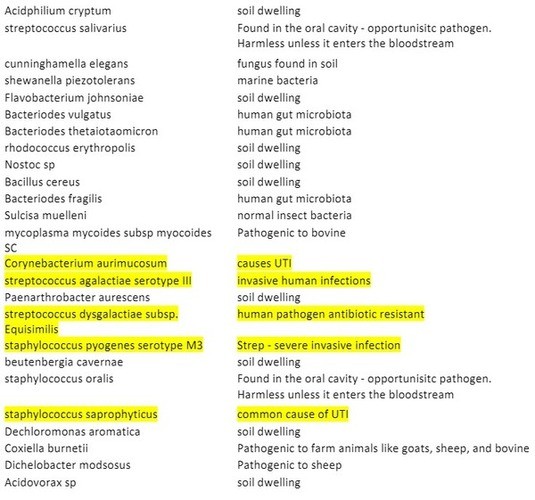
If you think that mask you’re putting on your child is protecting his health, think again. Because an analysis of some kids’ masks in Florida has shown that they contained a host of dangerous pathogens despite having been new or freshly laundered and then worn for mere hours.
Oh, there was one pathogen the masks didn’t harbor: COVID.
It has long been theorized that prescribing masks for the general population does more harm than good, and I wrote long ago, and have oft repeated, that they become as “Petri dishes on people’s faces.” This is especially true with children, who will continually fiddle with their masks with unwashed hands, thus contaminating both the exterior and interior.
Concerned about this, some Sunshine State parents sent five children’s masks and one from an adult to a lab at the University of Florida. These parents were worried “about potential contaminants on the mask, which is why they contacted the University of Florida’s Mass Spectrometry Research and Education Center for analysis,” reports commentator Andrea Widburg.
“Each mask sent to the lab had been either new or freshly laundered at the start of the day,” she continued. “Then the kids and the adult wore them for five to eight hours. The kids, aged 6 through 11, wore their masks for in-person schooling. In addition, for each mask, the parents sent samples from a t-shirt that one of the children had been wearing. Three of the masks were surgical masks, two were cotton, and one was a poly gaiter.”
The results weren’t pretty. According to the outlet reporting on the story, Rational Ground, the masks harbored 11 dangerous pathogens. The site lists them:
- Streptococcus pneumoniae (pneumonia)
- Mycobacterium tuberculosis (tuberculosis)
- Neisseria meningitidis (meningitis, sepsis)
- Acanthamoeba polyphaga (keratitis and granulomatous amebic encephalitis)
- Acinetobacter baumanni (pneumonia, blood stream infections, meningitis, UTIs—resistant to antibiotics)
- Escherichia coli (food poisoning)
- Borrelia burgdorferi (causes Lyme disease)
- Corynebacterium diphtheriae (diphtheria)
- Legionella pneumophila (Legionnaires’ disease)
- Staphylococcus pyogenes serotype M3 (severe infections—high morbidity rates)
- Staphylococcus aureus (meningitis, sepsis)
“Half of the masks were contaminated with one or more strains of pneumonia-causing bacteria,” Rational Ground elaborates. “One-third were contaminated with one or more strains of meningitis-causing bacteria. One-third were contaminated with dangerous, antibiotic-resistant bacterial pathogens. In addition, less dangerous pathogens were identified, including pathogens that can cause fever, ulcers, acne, yeast infections, strep throat, periodontal disease, Rocky Mountain Spotted Fever, and more.”
Conspicuously absent from the face coverings, however, was COVID.
Maskaholics may point out that six evaluated masks don’t exactly constitute a scientific sample. But it “doesn’t take a genius, or even a neurotic person, to figure out the stupidity of sticking masks on children’s faces for hours a day, without regard for cross-contamination or the amount of time worn,” points out Widburg. “It actually speaks well for the immune systems of American children that we didn’t have massive outbreaks of a medieval spectrum of dangerous diseases.”
She’s not kidding, as the following list of pathogens — from just one of the masks — attests:

The lab reports are here for those interested.
It’s possible that the masks didn’t harbor SARS-CoV-2 because the virus simply isn’t that prevalent anymore, especially in a sunny, hot state such as Florida. As I’ve reported, however, certain medical professionals have long theorized that face masks have been contributing to the spread of disease.
Some may now counter that medical staff in hospitals protect themselves with masks. But that’s another story. It may be effective when a specific person (responsible) wears a specific mask (N95) in a specific way (disinfected and properly fitted) for a short period of time. It’s entirely different when prescribing destined-to-be-disease-laden face coverings for the general population.
And all this for a pathogen, coronavirus, that’s less dangerous to children than is the flu, as studies out of Newcastle University in London and elsewhere have shown. The proof is in the pudding, too. For example, 358 children died of influenza during 2009-10 season alone.
Yet less than 300 kids have succumbed to COVID-19 over the course of more than one winter season.
(And some might have been flu deaths categorized as the China virus.)
Then there are the psychological effects of masking children (and especially of lockdowns) and other negative consequences; coming to mind here is the teen girl runner who passed out during a race due to mask-induced oxygen deprivation. Add to this the claim that we could be inhaling disease-causing microplastic particles from face masks, and the conclusion of a simple cost-benefit analysis is plain:
Healthy children should never, ever be masked.
Masking youngsters is child abuse. Let the kids breathe.



